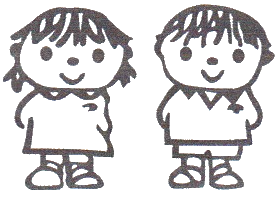SAFEGUARDING / CP – FILE TRANSFERS PROCEDURE
Retention of Child Protection Records
When child protection concerns about a child arise, all educational establishments should maintain and retain child protection records for as long as the child continues to attend the establishment; the records should then be transferred as below.
It is recommended that child protection records are transferred with the child and then retained until a child’s 25th birthday (6 years after the subject’s last contact with the Authority).
Records should then be securely disposed of and a record of disposal kept.
Paper records should be shredded and electronic records deleted.
This recommendation is in line with the Information and Records Management Society Guidance.
When children transfer from one educational establishment to another, either at normal transfer stage (e.g. from Nursery to School or from School to Further Education) or as the result of a move (e.g. to another setting or to an Independent School or to another Local Authority), and records of child protection/welfare concerns exist, these should be sent to the receiving school as soon as possible, preferably within 5 days.
This transfer should be arranged separately from the main pupil file.
Where children are dual registered (e.g. on roll at a mainstream school, but receiving education in another establishment any existing child protection records should be shared with the new establishment prior to the child starting, to enable the new establishment to risk assess appropriately.
In order to safeguard children effectively, it is important that when a child moves to a new educational establishment, the receiving establishment is immediately made aware of any current child protection concerns, preferably by telephone prior to the transfer of records.
It is important that all child protection records are transferred at each stage of a child’s education, up until the age of 18, or in some cases, beyond.
The responsibility for transfer of records lies with the originating setting, as the receiving setting might not otherwise know that child protection concerns exist.
The onus is therefore on the originating setting to facilitate the secure transfer of records, not on the receiving setting to make contact and collect the records. Paper or electronic records containing child protection information must be transferred in the most secure method available to the establishment:
• By hand if possible;
• If paper records are posted this should be by ‘signed-for’ delivery;
• Electronic records must only be transferred by a secure electronic transfer mechanism or after the information has been encrypted. Child Protection records must always be passed directly and securely to the Child Protection Lead in the receiving establishment.
Transfer Form
Whether child protection files are passed on by hand, by post or electronically, written evidence of this transfer (e.g. the form at Appendix A of this document) appropriately signed and dated, should be retained by both the originating and receiving setting.
It is recommended that the originating establishment keeps a copy of the form along with a copy of the chronology of events and any records pertaining to the establishment in line with retention guidance.
Children subject to a Child Protection Plan
If a child is the subject of a Child Protection Plan at the time of transfer the originating establishment must speak to the Child Protection Lead of the receiving establishment giving details of the child’s key Social Worker from Safeguarding and Children’s Services and ensuring the establishment is made aware of the requirements of the Child Protection Plan.
If a child subject of a Child Protection Plan leaves an establishment and the name of the child’s new education placement is unknown – the Child Protection Lead should contact the child’s Social Worker to discuss how and when records should be transferred.
Storage
All child protection records are sensitive and confidential so should be kept in a secure (locked at all times) filing cabinet, separate from other education records and accessible to safeguarding leads and senior staff only.
The child’s education file should be marked in some way to indicate that a child protection file exists.
All staff that may need to consult a child’s file should be made aware what the symbol means and to speak to the safeguarding lead if they have concerns.
Electronic Child Protection Records must be password protected with access strictly controlled in the same way as paper records.
Receiving Establishment Unknown
Where records of child protection/welfare concerns have been kept and details of the receiving establishment are not known, settings should inform the Multi-Agency Safeguarding Hub (MASH) and follow their advice.
Child Protection files should be retained by the setting and transferred to the new setting, once known, or destroyed once the retention period has expired, as detailed in the Retention section above.
APPENDIX A
Transfer Form for Child Protection Records between Educational Establishments
(Please print all information)
| Name of Child | |
| Date of Birth | |
| Home Address |
|
| Name of Originating Establishment | |
| Name of Current Child Protection Lead | |
| Date File Exchanged by Hand; or Date file posted by special delivery; or Date information received electronically | |
| Name of Receiving Establishment | |
| Address of Receiving Establishment | |
| Name of receiving Child Protection Lead | |
| Date file received by hand; or Date file received by special delivery; or Date information received electronically | |
| Signature of receiving Child Protection Lead | |
| Dated | |
Policy Updated October 2020

